Even the most marvellous medical devices will gather dust unless they meet certain needs: Inventures conference
Canadian innovators can produce the most wonderful medical devices in the world but they won’t get used unless they meet several requirements, experts said at Alberta Innovates’ Inventures 2025 conference in Calgary.
Even medical innovations that improve patient outcomes and/or lower the cost of health care still face adoption hurdles, they said during a panel session titled “Preventative Healthcare: How Technology is Transforming Prevention.”
 “It [getting new medical innovations adopted] is an uphill battle,” said Dr. Breanne Everett (photo at right), a clinician-researcher and co-founder and CEO, and president of Calgary-based Orpyx Medical Technologies Inc.
“It [getting new medical innovations adopted] is an uphill battle,” said Dr. Breanne Everett (photo at right), a clinician-researcher and co-founder and CEO, and president of Calgary-based Orpyx Medical Technologies Inc.
Orpyx makes a sensor-equipped insole that goes in a shoe to help detect and prevent foot ulcers in diabetics and people living with diabetes.
One in four people with diabetes develops foot wounds and many go on to have a limb amputated, Everett said. Sixty percent of people with diabetes develop peripheral neuropathy and lose feeling in their feet, so they’re not able to feel the pain of such wounds.
Orpyx’s insoles, by monitoring plantar pressure, adherence, step count and temperature data, can detect “hot spots” that will turn into ulcers, enabling actions to prevent this and extend mobility for people.
Everett said her company’s innovation has had “great uptake” from the U.S. Department of Veterans Affairs, but received little interest in Alberta or Canada.
Canada’s fragmented provincial health care system makes adopting new technology slow and bureaucratic, according to an article by JP Eskander, CEO at Toronto-based Sifio Health. “Many startups can’t move beyond pilot programs, forcing them to relocate to the U.S. to grow, taking their innovations with them,” he wrote.
In Alberta and other Canadian jurisdictions, many different government agencies and other organizations are responsible for purchasing medical devices in the various areas of health care for which they’re responsible.
“We’re working in a system where this [innovation] doesn’t look like the purchase of a traditional medical device” [such as a cane or a pacemaker] Everett said. “It doesn’t fit nicely into a box” or look like something that’s been purchased before.
“The [health care] system itself makes it challenging” to get an innovation accepted, she said.
Also, even if a new medical device will improve patient outcomes and save health care costs, it won’t get adopted if it’s challenging or time-consuming for patients and health care providers to use, she said.
Orpyx through many iterations of its sensory insole had to make the device “completely invisible,” so it was embedded in activities patients were already going to do and it was easier to keep using the insole than stop using it, Everett said.
Medtech companies need to get rid of the “care and feeding of the device,” she added.
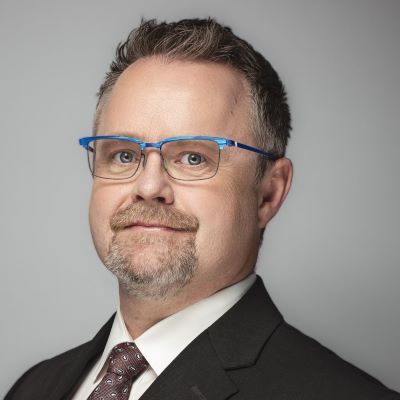 A new medical device has to be “simple, seamless and effortless” in order to be widely accessible and adopted, said Jason Doyle (photo at right), head of enterprise services at Siemens Health Care.
A new medical device has to be “simple, seamless and effortless” in order to be widely accessible and adopted, said Jason Doyle (photo at right), head of enterprise services at Siemens Health Care.
The devices need to be able to be deployed in a scalable manner, including being able to adapt to new information, he said.
In Alberta, Siemens is focused on using artificial intelligence to create digital twins of both patients and the health care system, to determine how to best deploy therapies and technologies to prevent and treat cancers.
Using personalized digital twins enables the tuning of medical interventions to individual patients, Doyle said.
Catching cancer at the earliest Stage 1 can yield a two- to five-times savings in health care costs, in addition to improved patient outcomes, he noted.
The Alberta government has invested $800 million over eight years in a partnership with Siemens to improve cancer detection and treatment. Siemens Healthineers is providing an additional $175-million investment.
Siemens Healthineers will establish an AI oncology centre of excellence in Edmonton and an oncology training centre of excellence in Calgary. Siemens and its partners also will soon announce a medical and research innovation fund, Doyle said.
In order to move from reactive health care to preventative health care, all stakeholders – patients, health care providers, health care procurers and payers, and innovators – need to be at the table working in a collaborative partnership, he said. “If you don’t have that, you run into roadblocks.”
Medical devices need to fit seamlessly with health care workflow
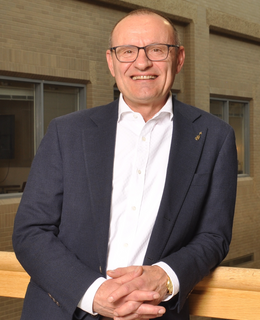 Another requirement for the adoption and use of medical devices is that they must fit seamlessly into the workflow of clinicians and other health care providers, said Dr. Pietro Ravani (photo at left), clinician-scientist at the University of Calgary.
Another requirement for the adoption and use of medical devices is that they must fit seamlessly into the workflow of clinicians and other health care providers, said Dr. Pietro Ravani (photo at left), clinician-scientist at the University of Calgary.
Ravani said his team have developed a software tool hosted in the cloud that can, based on the health characteristics of individual patients, their interaction with clinicians and other factors, predict adverse health events – such as kidney failure – within the next one to five years.
But for any medical innovation to be adopted, med tech developers need to understand the workflow of clinicians and integrate their device into that workflow or it won’t be adopted by doctors, he said.
“You cannot expect to provide an innovative technology that doesn’t respect and integrate the workflow properly so the timing and plan of the clinical activities are not being interrupted,” Ravani said.
Companies also need to help doctors understand the technology and its benefits, and take the time to engage physicians and develop influential relationships, he said. “I cannot expect that because [a medical innovation] is right that it’s going to be accepted.”
Everett agreed, pointing out that the health care system has become so complex and under-resourced and health care providers so overworked that doctors barely have time to write their daily medical notes let alone think about incorporating a new device or solution into their workflow.
In developing tech devices, companies need to think about how their innovations will give time back to physicians, she said.
But beyond innovating at an individual level, tech companies and other stakeholders in the health care system need to think about how the overall system needs to change as well, Everett said.
Health care systems are in essence “sick care systems” that still compensate clinicians for engaging with sickness, she noted. “The models are not well defined in many cases to be compensating clinicians for preventative care,” which is something all stakeholders need to advocate for, she added.
Doyle from Siemens said another reason why innovative medical devices don’t get adopted and used in their cost.
However, this is because health care systems focus on the cost of the device itself rather than on the value to the system in long-term cost savings, he said.
Doyle said another barrier to med tech adoption is that many procurers of medical devices in Canada insist upon the device being approved under Canadian standards of care, even with devices that have international standards approval and are being used in other countries.
Also, a lot of procurement is skewed toward the conclusion of the fiscal year at the end of March, a phenomenon known as “March madness.” So any medical innovations proposed outside of that time frame run into more resistance and less chance of being procured.
There also needs to be a rethinking of how the buyers of medical devices assess those devices, Everett said.
“When it comes to the assessment of a new technology, there’s really no unifying decision-maker to assess what is the total cost of care, and a pathway for innovators to go to for that assessment to happen to make a determination if something makes sense or not,” she said.
Everett said she was encouraged by the recent Alberta cabinet shuffle, which included a minister, Adriana LaGrange, with preventative health care included in her portfolio, as Minister of Primary and Preventative Health Services.
Alberta has to decide whether it wants to be an innovative province in health care and the decision to drive that innovation has to come from the very top, Everett said.
Alberta certainly has the potential to be a “sandbox” for new health technologies and a pathway to properly assess new medical devices, she said.
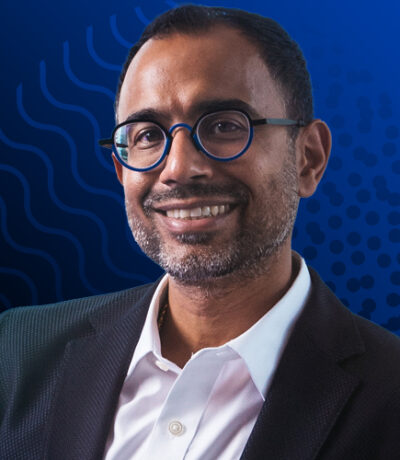 Panel moderator Dr. Sunil Rajput (photo at right), executive director (acting), health innovation at Alberta Innovates, pointed to the Toronto-based University Health Network’s value-based health care approach, which focuses on maximizing patient health care outcomes for the resources spent.
Panel moderator Dr. Sunil Rajput (photo at right), executive director (acting), health innovation at Alberta Innovates, pointed to the Toronto-based University Health Network’s value-based health care approach, which focuses on maximizing patient health care outcomes for the resources spent.
Ravani pointed out that Alberta, with its high-quality, long-term health dataset, can reflect many other populations in the world in assessing the impact of medical devices and other preventative care interventions.
Alberta has the largest population-based health data set in North America, which allows research to be based on information about the health of people of all ages, ethnicities and demographic backgrounds. Denmark and Taiwan are the only other places in the world with such a rich resource.
Ravani said that given overall health care costs and the cost of some medical devices, clinicians need to hone in on targeting the patients most in need of care with the most effective treatment for the best outcomes.
All stakeholders in the health care system need to start by thoroughly understanding the health need, he said. “Having the end goal in mind is the most important step.”
R$
| Organizations: | |
| People: | |
| Topics: |
Events For Leaders in
Science, Tech, Innovation, and Policy
Discuss and learn from those in the know at our virtual and in-person events.
See Upcoming Events
You have 0 free articles remaining.
Don't miss out - start your free trial today.
Start your FREE trial Already a member? Log in
By using this website, you agree to our use of cookies. We use cookies to provide you with a great experience and to help our website run effectively in accordance with our Privacy Policy and Terms of Service.
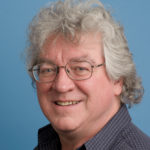


.jpg)
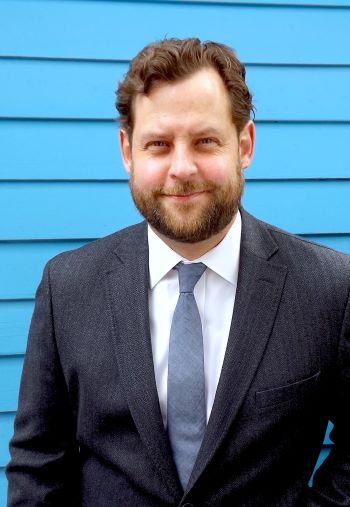
.jpg)